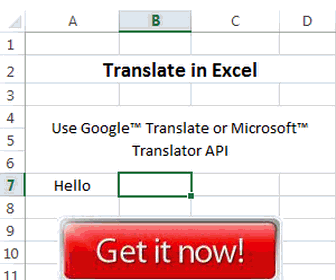Getting eCommerce sales can be difficult if you don’t have the right eCommerce marketing and eCommerce sales strategies.
As an eCommerce business owner, you’ll understand that the way you sell products or services online is fairly different from the way you sell the same products and services in a brick-and-mortar store.
Why? For one, the eCommerce business model space is ever-evolving.
Today everyone is jumping on the metaverse trend and trying to buy NFTs and virtual land. Tomorrow, your target customers may want contactless payment services and an AI customer service agent.
Traditional marketing and sales channels cannot bring the same results as eCommerce marketing tools and channels. Take, for example, a fashion eCommerce business idea catering to the Gen Z demographic.
In this scenario, investing resources in traditional marketing channels like radio jingles and cold calling would be inefficient and ineffective.
Instead, focus on platforms and strategies that resonate with your audience, such as leveraging social media influencers, creating engaging video content, and participating in trending TikTok challenges.
So, how can you increase your eCommerce sales? Let’s find out!
What is an eCommerce Sales Strategy?
An eCommerce sales strategy is a comprehensive plan and set of tactics devised by an online business to attract customers, drive sales, and maximize revenue in the digital marketplace. The strategies are designed to optimize the online selling process and maximize revenue for an eCommerce business.
It involves a systematic approach to various aspects of the eCommerce business. This includes eCommerce marketing, customer engagement, technology utilization, and overall business operations.
Key components of an eCommerce sales strategy may include:
- Market Research: Understanding the target audience, industry trends, and competitive landscape is essential. Research helps identify customer needs, preferences, and pain points, allowing businesses to tailor their strategies accordingly.
- Product Positioning and Differentiation: Clearly defining the unique selling propositions (USPs) of products and highlighting what sets them apart from competitors is crucial. This involves crafting compelling product descriptions, emphasizing quality, and showcasing value.
- Optimized Website and User Experience: Ensuring that the eCommerce website is user-friendly, visually appealing, and easy to navigate is fundamental. A seamless user experience contributes to higher conversion rates and customer satisfaction.
- Multi-Channel Presence: Diversifying the sales channels by leveraging various platforms, such as marketplaces, social media, and email marketing, helps reach a broader audience. Each channel should be strategically utilized based on the target demographic and market trends.
- Digital Marketing and Advertising: Employing online marketing strategies, including search engine optimization (SEO), social media marketing, pay-per-click (PPC) advertising, and content marketing, helps drive traffic to the eCommerce website and increase brand visibility.
- Personalization: Tailoring marketing messages, product recommendations, and promotions based on individual customer preferences and behaviors enhances the shopping experience and increases the likelihood of conversions.
- Customer Retention and Loyalty Programs: Building long-term relationships with customers is essential for sustainable growth. Implementing retention strategies, such as loyalty programs, email campaigns, and exclusive offers, encourages repeat business.
- Data Analytics and Optimization: Regularly analyzing sales data, customer feedback, and website analytics allows businesses to identify areas for improvement. Optimization efforts can include refining marketing strategies, enhancing website functionality, and adjusting product offerings.
- Mobile Optimization: With the increasing use of mobile devices for online shopping, ensuring that the eCommerce platform is mobile-friendly is crucial. Responsive design and a seamless mobile experience contribute to better conversion rates.
- Customer Service and Support: Providing excellent customer service, including responsive communication, efficient problem resolution, and a user-friendly returns process, contributes to positive customer experiences and fosters trust.
13 Best eCommerce Sales Strategies
Implementing effective eCommerce sales strategies is crucial for the success of your online business.
Here are some proven and best eCommerce sales strategies to boost your sales:
1. Know Your Audience
Understanding your audience is like having a secret weapon in the eCommerce world. Take the time to identify who your customers are, what they like, and how they shop. Are they tech-savvy millennials or perhaps trend-conscious Gen Z shoppers?
Knowing your audience allows you to tailor your products, marketing messages, and overall shopping experience to resonate with their preferences, increasing the chances of conversion.
2. Craft a Compelling Digital Presence
There are a lot of other businesses selling the same products you sell. So, what makes your eCommerce store different?
First, you need to invest in a visually appealing and user-friendly website design that reflects your brand identity. Think of it as your digital storefront – it should invite customers in and make them want to stay.
It is important that you incorporate high-quality images, clear product descriptions, and an intuitive navigation system. Remember, a smooth online journey is more likely to convert casual browsers into enthusiastic buyers.
3. Get Social with Your Marketing
Social media isn’t just for sharing cute cat videos – it’s a goldmine for eCommerce businesses. You can establish a strong presence on platforms like Instagram, Facebook, and TikTok, where your potential customers hang out.
Engage with your audience through captivating content, behind-the-scenes peeks, and user-generated content. Social media is not just about selling – it’s about building a community around your brand, turning followers into loyal customers.
4. Embrace Mobile Commerce
Picture this – your customers are sipping coffee at a café, scrolling through their phones, and voila! They land on your online store.
Mobile commerce is not the future – it’s the now. Ensure your eCommerce platform is optimized for mobile users with responsive design and user-friendly interfaces. From product selection to checkout, the mobile experience should be seamless.
The more effortless it is for customers to shop on their phones, the more likely they are to make a purchase.
5. Invest in Personalization
Imagine walking into a store where the staff knows your name, your preferences, and even recommends products tailored just for you. That’s the magic of personalization in eCommerce.
One way to get started with personalization is to take advantage of data analytics. Data analytics will help you to understand customer behavior.
In turn, you can use it to deliver personalized recommendations, promotions, and content. When customers feel seen and understood, they’re not just buying products; they’re investing in an experience.
6. Streamline the Checkout Process
Ever abandoned an online shopping cart because the checkout process felt like a marathon? Don’t let that happen to your customers. Simplify the checkout process to reduce friction.
You can opt for one-click options, provide clear shipping information, and offer a variety of payment methods. The goal is to make the transaction as smooth as possible, so your customers happily complete their purchase without second thoughts.
7. Nurture Customer Relationships
Once a customer makes a purchase, the journey doesn’t end – it transforms. Implement strategies for customer retention, like loyalty programs, exclusive offers, and outstanding customer service.
Building a relationship with your customers goes beyond the transaction; it’s about turning one-time buyers into lifelong brand advocates. The more you invest in customer relationships, the more likely they are to come back and recommend your store to others.
8. Stay Tech-Savvy
In the dynamic world of eCommerce, being tech-savvy is not a luxury; it’s a necessity. Embrace emerging technologies like AI for personalized shopping experiences and chatbots for instant customer support.
Keep an eye on industry trends and be open to incorporating new technologies that enhance your eCommerce operations. Staying ahead in the tech game positions your business as a forward-thinking player, ready to meet the evolving needs of your customers.
9. Optimize for SEO
Think of SEO as the secret handshake to get your eCommerce store noticed by search engines. Invest in search engine optimization to improve your website’s visibility on platforms like Google.
Use relevant keywords in product descriptions, meta tags, and URLs. The higher your store ranks in search results, the more likely potential customers will discover your products organically.
It’s like having a 24/7 salesperson working to bring customers to your virtual doorstep.
10. Cross-Selling and Upselling
Imagine you’re at a fast-food joint, and they ask, “Would you like fries with that?” That’s cross-selling and upselling in action.
In the eCommerce world, these strategies involve suggesting additional or upgraded products to customers during the purchasing process. Cross-selling encourages customers to buy related items, while upselling offers them a premium or enhanced version of their chosen product.
For instance, if someone is buying a camera, cross-selling might involve recommending a camera bag, and upselling could involve suggesting a higher-end model. These techniques not only boost revenue but also enhance the overall shopping experience by introducing customers to complementary or superior products.
11. Subscription Commerce
Picture this – a box arrives at your doorstep every month, filled with curated goodies tailored to your preferences. That’s the allure of subscription commerce.
This model involves customers signing up for recurring deliveries of products or services, creating a steady and predictable revenue stream for businesses. Whether it’s a beauty box, meal kit, or streaming service, subscription commerce offers convenience for customers and builds loyalty.
Businesses benefit from a more predictable income and the opportunity to continually engage and delight subscribers with curated content or exclusive perks.
12. Dynamic Pricing
Ever noticed how airline ticket prices fluctuate based on demand or the time of booking? That’s dynamic pricing at work.
In eCommerce, dynamic pricing involves adjusting product prices in real-time based on various factors, such as demand, inventory levels, or customer behavior. It’s a smart strategy that allows businesses to remain competitive, optimize revenue, and respond to market dynamics swiftly.
While it requires sophisticated algorithms and monitoring tools, dynamic pricing empowers businesses to stay agile in a fast-paced market environment.
13. Payment Methods
Asking customers to pay with exact change? Not in the eCommerce world.
Providing a variety of payment methods caters to the diverse preferences and needs of your customers. From contactless credit cards and biometric payments to buy now, pay later options, offering a range of payment choices enhances the overall shopping experience.
It’s not just about convenience – it’s about inclusivity. Some customers prefer the security of credit cards, while others might opt for the flexibility of installment plans.
Accommodating various payment methods allows businesses to eliminate the barriers to purchase and increase the likelihood of converting potential customers into satisfied buyers.
Grow and Evolve
The eCommerce landscape is not a stagnant pond – it’s a dynamic river of change. Keep your eyes open for emerging trends, customer feedback, and technological advancements.
Don’t be afraid to innovate and adapt your strategies accordingly. Whether it’s embracing a new social media platform or revamping your website.
It could even be introducing unique product offerings, staying agile with your eCommerce sales strategies ensures that your eCommerce business doesn’t just survive – it thrives in the ever-evolving digital marketplace.



















